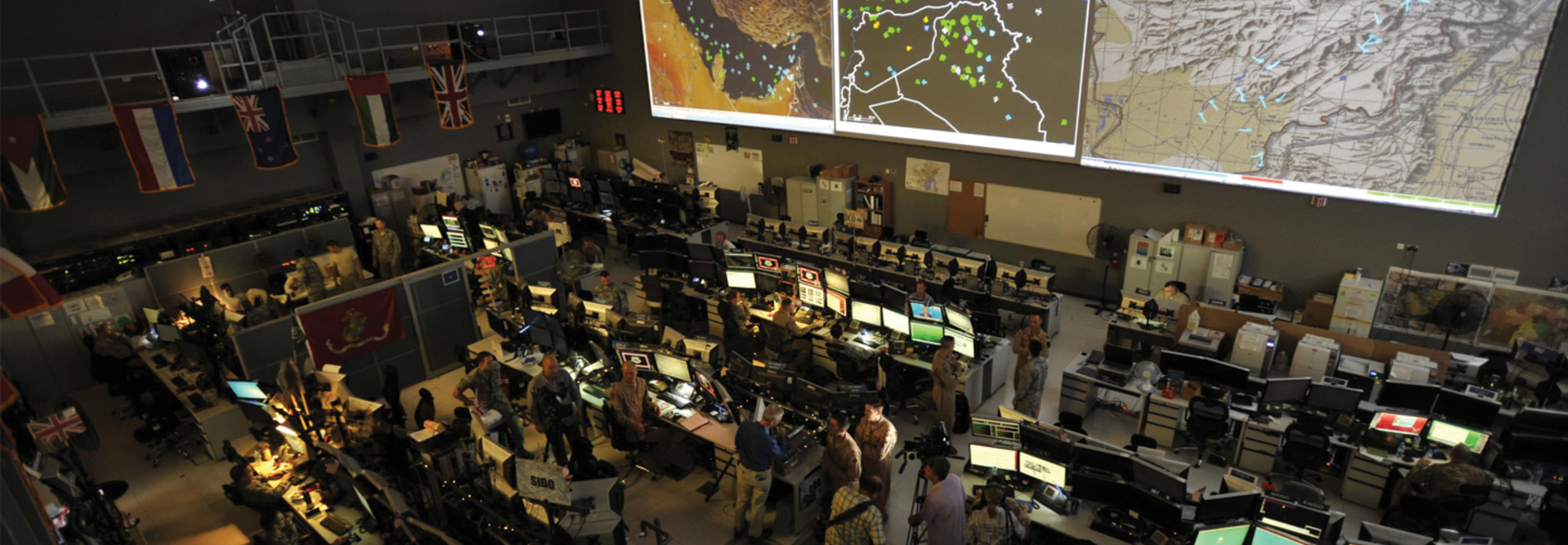What Is JADC2 and What Does It Mean for the DOD?
To make decisions faster, tactical networks from the service branches need to be integrated and compatible with one another. As the Congressional Research Service notes, “JADC2 envisions providing a cloud-like environment for the Joint force to share intelligence, surveillance, and reconnaissance data, transmitting across many communications networks, to enable faster decision-making.”
JADC2 has a unique dependency on data analytics, artificial intelligence and potential augmented reality from soldiers in the field. The goal is to create a unified battle plan that considers these inputs. The old ways of battle planning need to change so that decisions can be made in hours or minutes rather than days.
While a cross-functional team is leading the JADC2 effort within the Pentagon, it involves integrating numerous programs, as USNI News reports:
- DOD CIO: Fifth-Generation (5G) Information Communications Technologies
- Office of the Secretary of Defense (Research & Engineering): Fully Networked Command, Control, and Communications (FNC3)
- Defense Advanced Research Projects Agency: Mosaic Warfare
- Air Force: Advanced Battle Management System
- Army: Project Convergence
- Navy: Project Overmatch
To make this a reality, the DOD will need to synchronize these platforms and make sure they are modernizing in the same way and using the same technology.
JADC2 includes a reference architecture that sets a common baseline that considers changing technologies and the need to adapt approaches. “The reference architecture includes the technological pillars of JADC2 as well as the core technology enablers and minimum viable products,” Brig. Gen. Rob Parker, who chairs the Joint All-Domain Command and Control Cross-Functional Team, and Cmdr. John Stuckey, the AI lead in the Joint All-Domain Command and Control Division of J-6, write in Defense News.
“Through conformance with the reference architecture, all future JADC2-related efforts are able to achieve a unity of effort as they tackle the DoD’s most challenging modernization tasks, to include the implementation of zero trust, identity management, cloud services, DevSecOps and improved transport capability, all of which must function within mission partner environments,” they add.
READ MORE: Find out how securing the tactical edge can help operators in the field.
How Can the DOD Make JADC2 a Success?
While JADC2 is clearly a top priority for the DOD, there are hurdles the Pentagon will need to overcome to ensure the program is successful.
One of the key issues is that JADC2 does not currently have its own, specific line item in the DOD budget. Instead, programs such as the Air Force’s Advanced Battle Management System do.
To bring everything together in one, integrated battle picture, that budgeting will need to be more unified, which is something only Congress can approve. The DOD has been doing tests and various service branches have been conducting experiments within their respective domains, but for this effort to take hold across the entire DOD, it will need dedicated funding and commitment from all of the service branch chiefs and from DOD leadership.
RELATED: How does the Army plan to unify its tactical and enterprise networks?
Another hurdle is the reference architecture. It is a wise idea to have one for JADC2. The issue is that the services may be looking for a one-size-fits-all approach, and that might not work. The services may need to be more flexible.
Last year’s evacuation of soldiers and civilians from Afghanistan shows the peril and the promise of JADC2 at this point.
Lt. Gen. Dennis Crall, the director for command, control, communications, and computers/cyber and CIO, Joint Staff J6, notes to SIGNAL that the DOD faced challenges in locating necessary information, communication issues among certain systems and data storage issues.
“A good bit of what we did was discovery learning. We had the data, but we didn’t know where it was. So, we had to go find it,” he says. “We had processes that were far too labor-intensive that needed to be automated. We had a need for a machine learning or an artificial intelligence layer. We had a need for some level of predictive analytics to look at what was next.”
In response, the DOD convened Project Orsus, which combines data analytics platforms from across service branches and the DOD and “connected multiple data sources to provide near real-time information to the Joint Staff and others,” SIGNAL reports.
EXPLORE: How will 5G networks help the military modernize?
The project points to the need for a common data fabric and coordination across services for JADC2. “We brought in data professionals who could help us write the algorithms to make these machines speak better together,” Crall says. “We were able to go through some data storage concerns about how we amalgamate data, where’s the most secure place to keep it, how we build access to it and who we share it with.”
To make this a systemic process and enable true integration across the DOD, the Pentagon may need to work with trusted partners to identify pain points in deploying and integrating data analytics and AI tools. It will be important for the DOD and the service branches to avoid one-track thinking and not get locked into what may have been their preferred solutions or approaches in the past, when siloed networks were the norm.
Making the vision of JADC2 a reality is possible, but it will be challenging. It must be implemented in a structured and strategic manner. It will also require a cultural change, since IT leaders and combatant commanders all need to buy into tools like AI and relinquish some level of control from human operators’ hands.
JADC2 is a complex but worthy undertaking. Right now, there is a lot up in the air in terms of budgeting and getting on the same page from a technology perspective. However, these are challenges that must be addressed to make JADC2 a reality.
This article is part of FedTech’s CapITal blog series. Please join the discussion on Twitter by using the #FedIT hashtag.












